Since its Australian launch in 2014, the Mazda CX-3 has been an immensely popular car. To date, over 50,000 have been sold locally and it regularly features in the top 10 Australian car sales each month. Buyers love its combination of style, value and good driving dynamics but we think that the CX-3’s run at the top of the small SUV class is beginning to come to an end. Enter the 2020 Hyundai Venue.
The Venue is not Hyundai’s first small SUV attempt but it is its cheapest new car offering. Replacing the popular Accent, the Venue offers a higher driving position and a more modern SUV body style to appeal to our obsession with the body style. Predictably, pricing is higher than the Accent to the tune of $4,500. Yet as the CX-3 shows, Australians have no problem paying inflated prices for small cars.
So if you’re looking for a small SUV, which is best – the 2020 Hyundai Venue, or the 2020 Mazda CX-3? Let’s jump in and find out.
Price & Specs
Priced from $23,720 plus on-road costs, the mid-spec 2020 Hyundai Venue Active auto is $2,930 less than the $26,650 CX-3 Maxx Sport auto – important in a price conscious market such as this. Shared equipment between the two includes low-speed auto emergency braking (AEB) with forward collision warning, auto headlights, rear parking sensors, electric-folding mirrors, six-speaker sound systems, a front centre armrest and centre touch screens with reversing cameras.
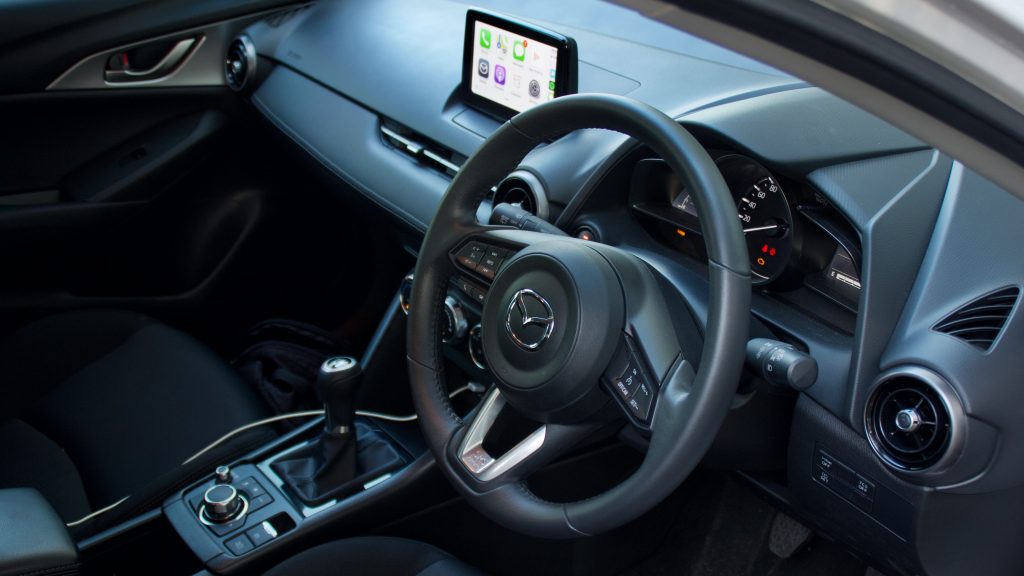

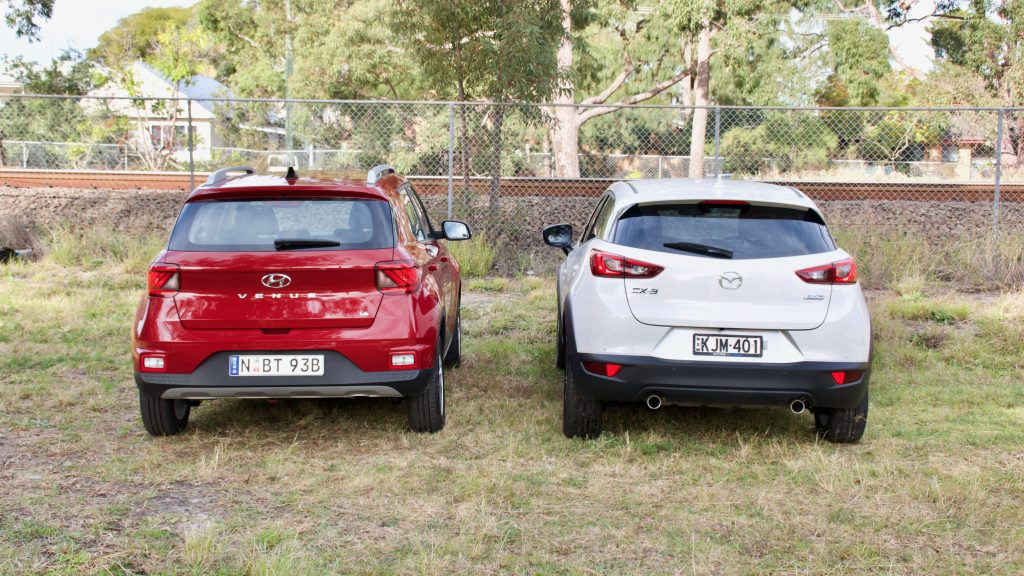
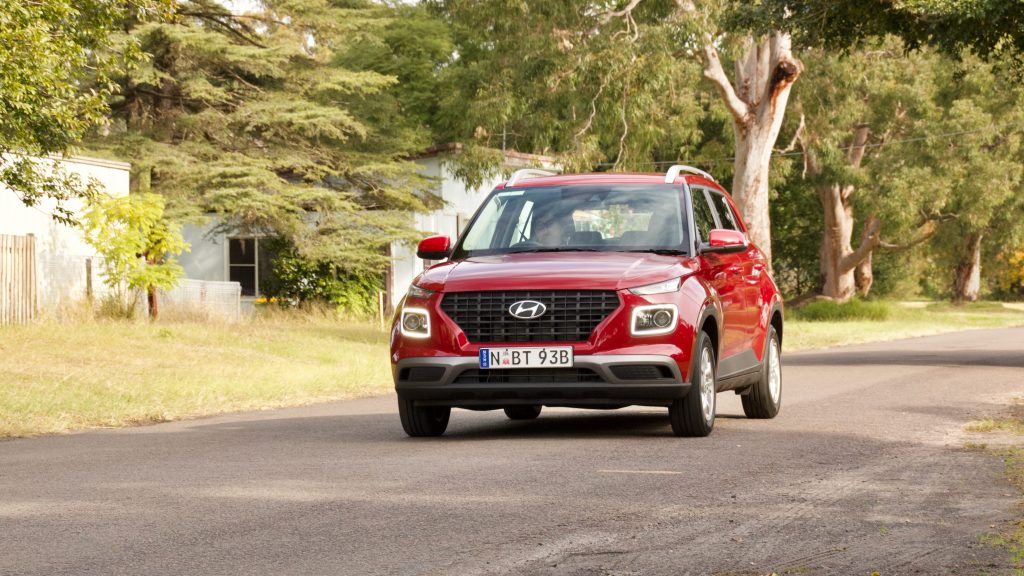
Over the CX-3, the Venue Active adds pedestrian detection and a higher speed threshold to its AEB system, auto high beam, lane keep assist with lane departure warning, Apple CarPlay and Android Auto smartphone mirroring, heated mirrors, a digital speedo, tyre pressure monitoring, LED daytime running lights and roof rails.
Whereas the CX-3 uniquely includes auto wipers, a second USB port, a rear centre armrest, larger wheels, satellite navigation, digital radio and climate control over the Venue. It must be said that most of these features (and a lot more) do come standard in the $25,740 Venue Elite, which is still less to pay than a CX-3 Maxx Sport.
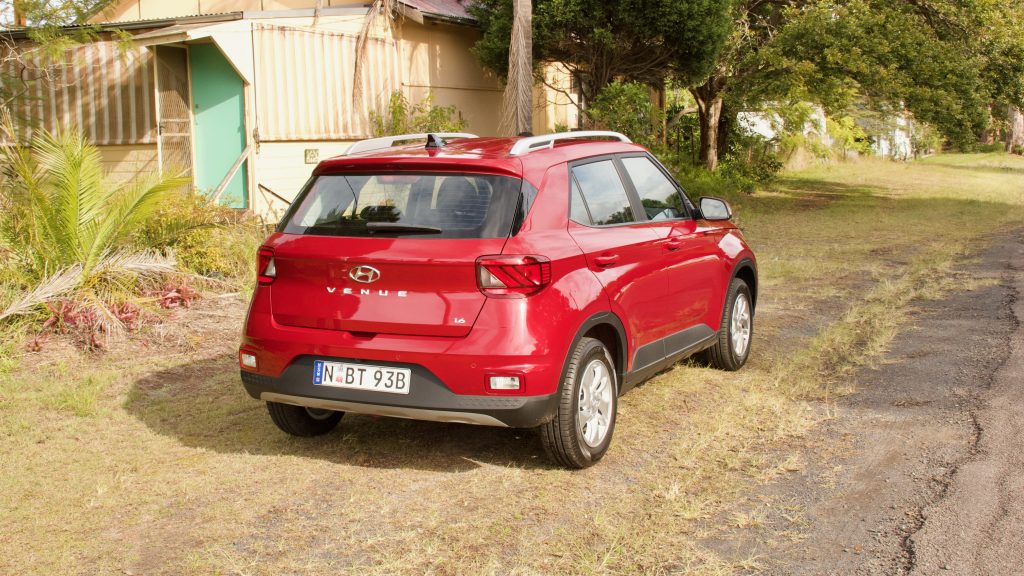
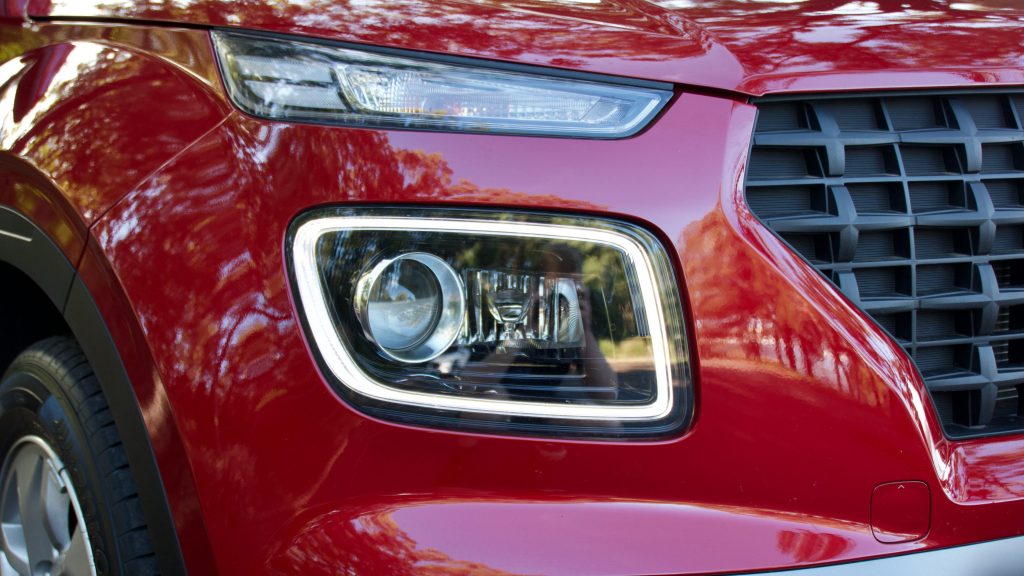
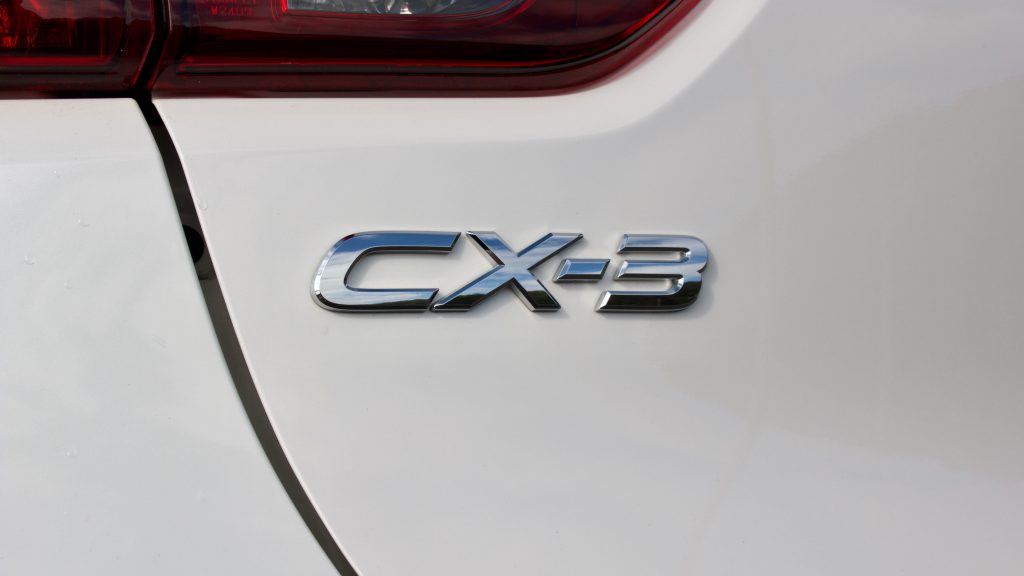
These tested models both represent the second-from-bottom models in their respective ranges and while the Venue offers only one model above the Active, the CX-3 offers three. Venue pricing tops out at just under $30,000 and the CX-3 reaches beyond $40,000.
Considering their light car platform sharing however, we think that they both should be better value – small cars such as the Kia Cerato can be bought with more equipment and more overall car for less money. But that’s the price you pay for wanting a small SUV.
Performance & Economy
Let’s cut to the chase here – these cars won’t set your world alight, but they’re more than adequate. Both engines aren’t new, their performance isn’t spectacular and their fuel economy could be better too. For most buyers, they will be totally fine. The Venue’s engine is a 1.6-litre donk that produces 90kW of power and 151Nm of torque, while the CX-3 uses a larger 2.0-litre unit with 110kW and 195Nm. Both cars use a six-speed automatic transmission and power is sent to the front wheels, though all-wheel drive is available on the CX-3. If you’re one of the few that still drive manual, both cars offer a great six-speed manual option.
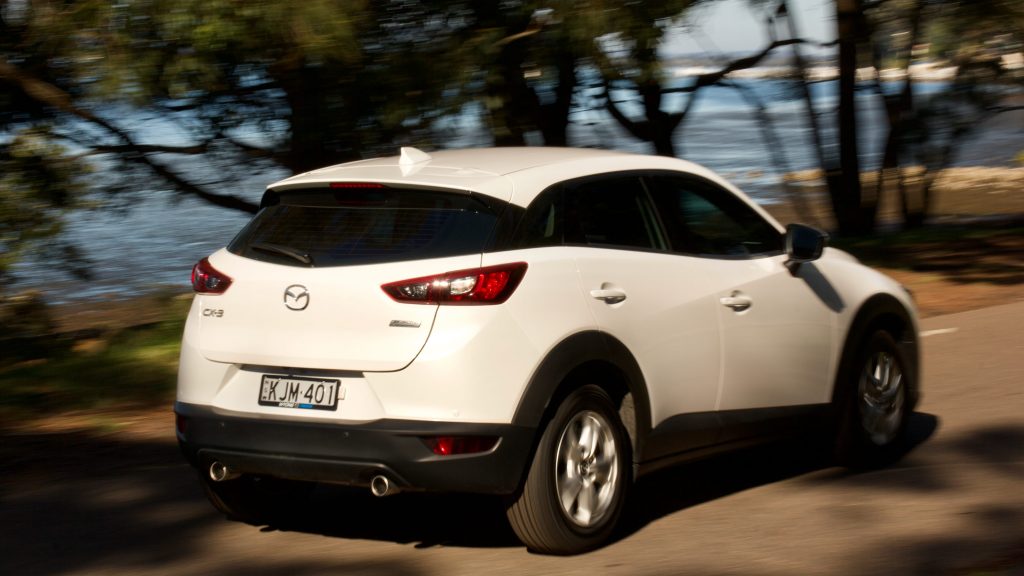
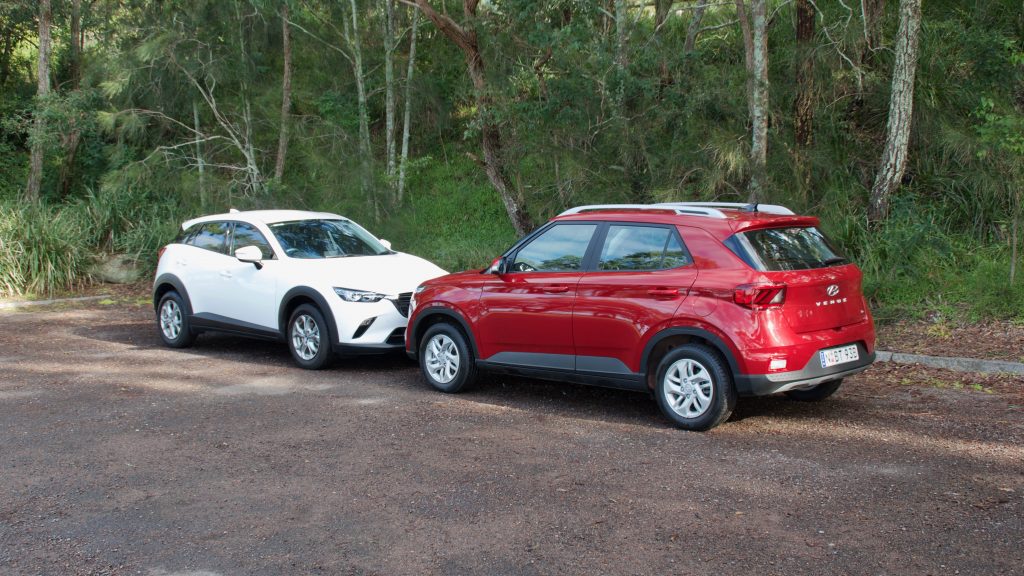
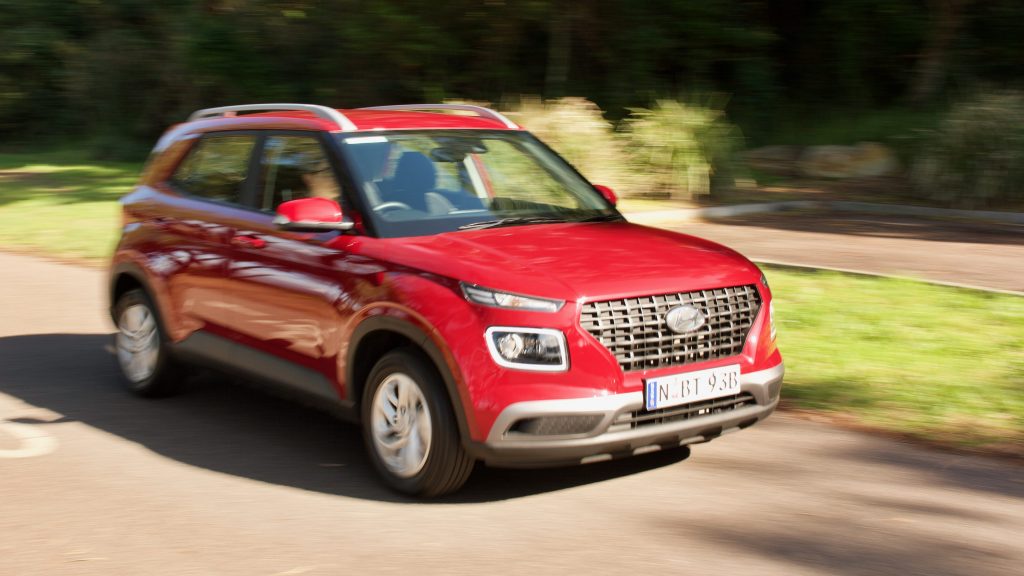
Despite using a larger/more powerful engine and weighing more (1,225kg vs 1,269kg kerb), the CX-3 is actually the more fuel efficient car using a claimed 6.3L/100km. Perhaps due to the older-tech engine and a lack of stop-start technology, the Venue uses 7.2L/100km and running it in purely urban driving will see that climb to a thirsty 9+L/100km. Thankfully, the Venue achieves close to its claim in real combined city and highway driving, unlike the Mazda – on test, we achieved 7L/100km in the Venue, and 7.3L/100km in the CX-3.
The Hyundai’s forward collision warning system is more sensitive than the Mazda’s, though the Mazda only activates at lower speeds. The CX-3 does feature blind-spot monitoring and rear cross-traffic alert (with auto rear braking) – features that it needs, thanks to the poor rear vision – while the first two features only come on the top-spec Venue Elite.
It must be said that both the Venue and CX-3’s headlights are not amazing, though at least the Venue’s standard auto high beam and cornering lights do help at night. The US market Venue’s LED lighting is unfortunately not yet available in Australia, and you must jump up to the CX-3 sTouring for the same tech.
Ride & Handling
The CX-3 has always been the driver’s choice in the small SUV segment, and it still is. It’s just so darty, fun and composed like an MX-5 SUV would be. Thanks to a 2019 update, the ride quality is more comfortable than before and this means that while it’s still fun to drive, it’s better around town and in everyday driving. The CX-3’s steering is also very natural, with good weighting and feel.
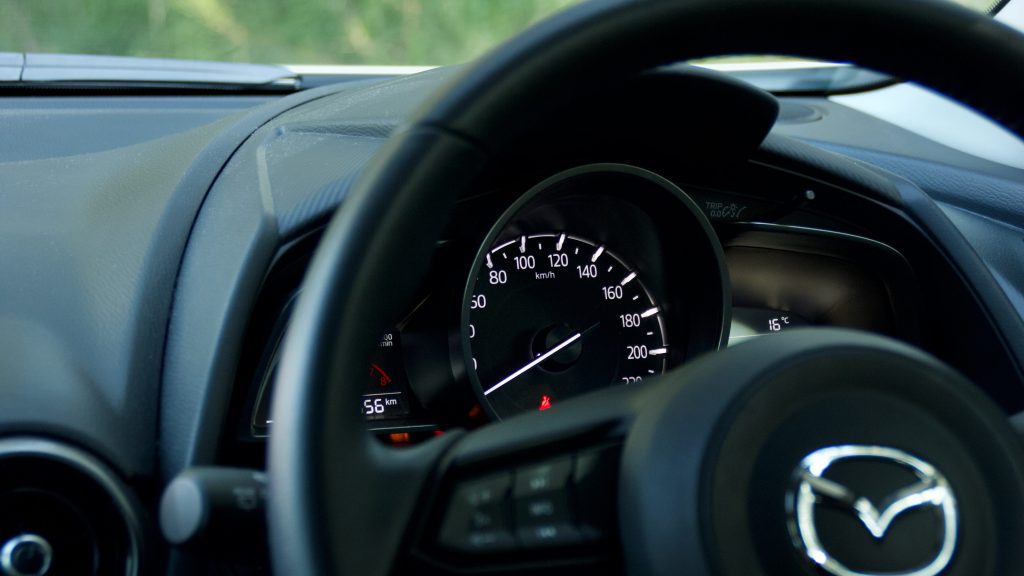
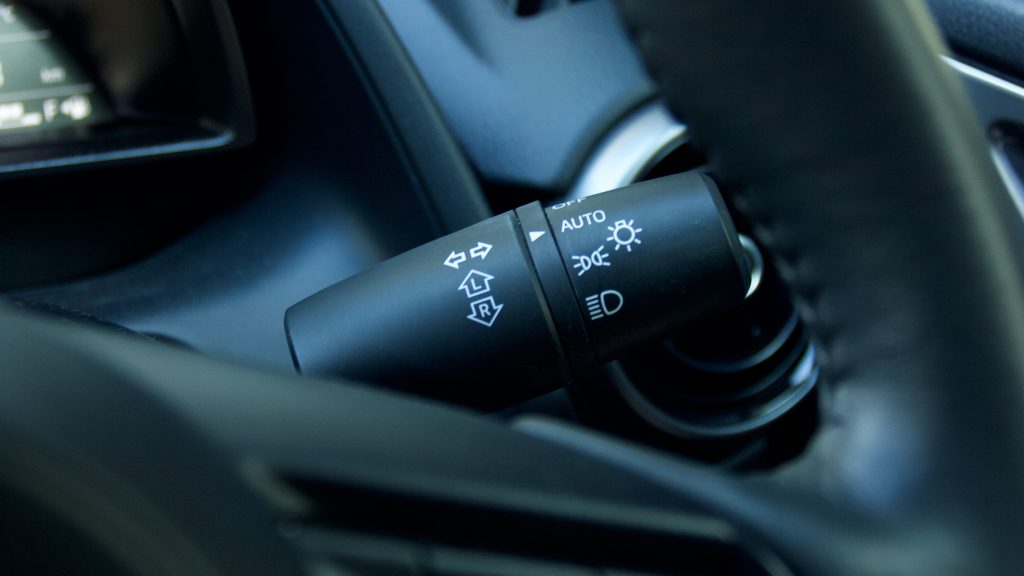
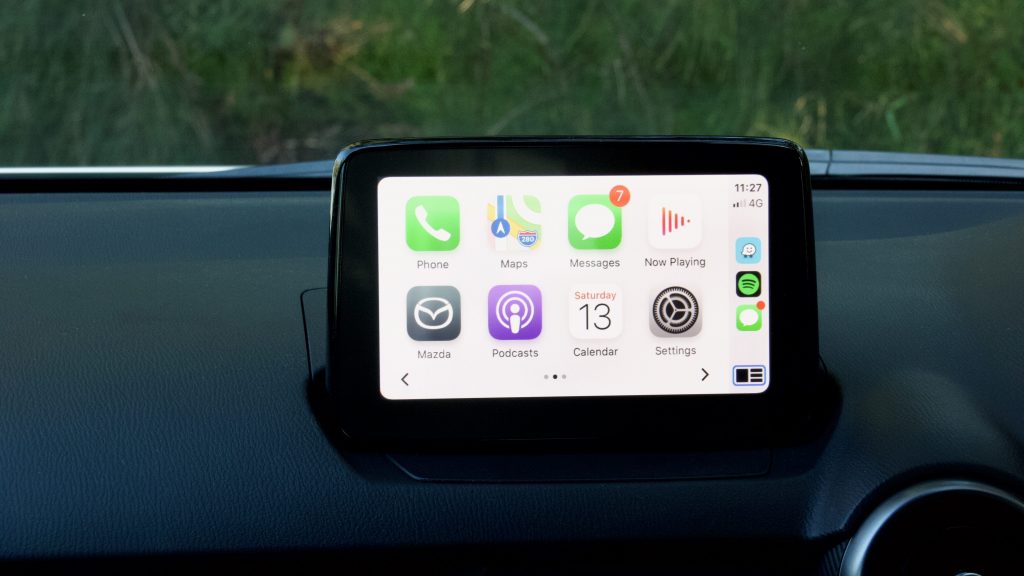
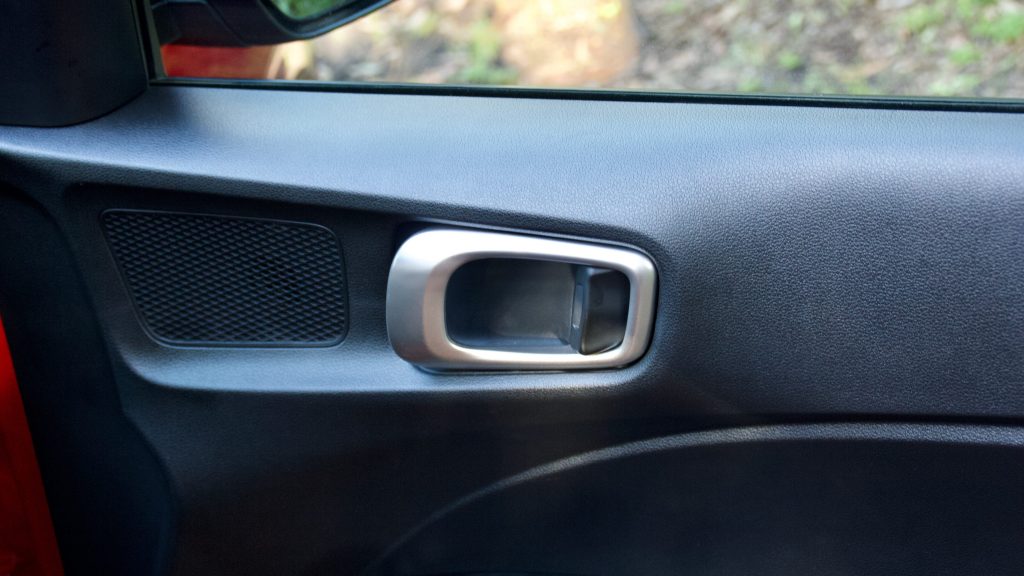
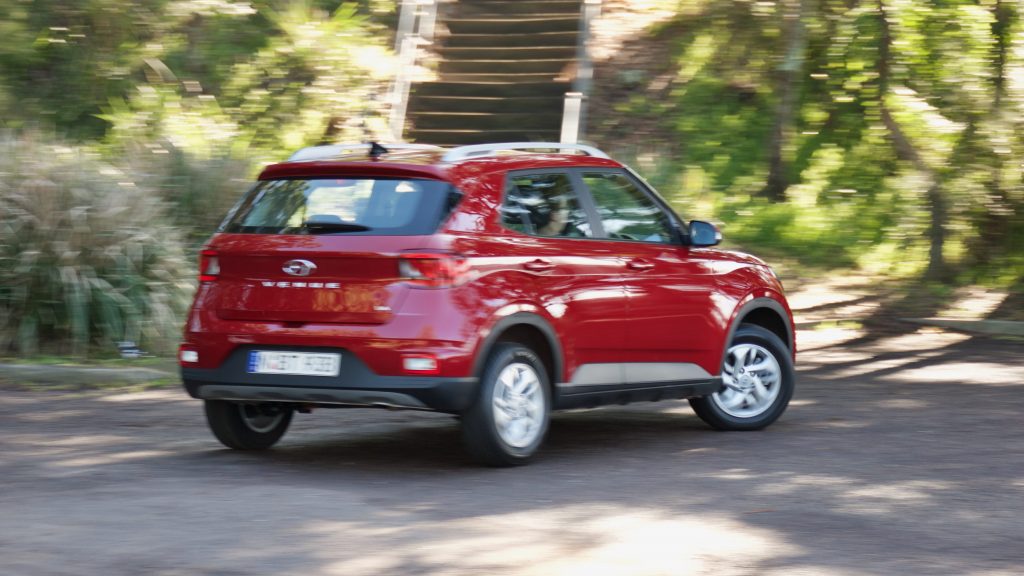
Yet thanks to Hyundai’s local tuning program, the Venue drives well too and is the more comfortable car to drive every day. It’s more comfortable than its larger i30 brother, yet its steering feels more natural, and because of its lower weight, it’s more agile and more fun too. It’s not as fun to drive as the CX-3, but for more people it will be the more comfortable option.
Visibility is far superior in the 2020 Hyundai Venue, with larger windows, thinner pillars and a higher resolution reversing camera. Road noise levels are also slightly lower in the Venue as well.
Interior & Practicality
If there’s an area where the CX-3 is showing its age, it’s inside. Despite an update with a new centre console and a few trim changes, the CX-3 feels every bit its 2014 vintage inside. The instrument cluster is dated with a small trip computer screen, there’s no digital speedometer and its switchgear is from other Mazda products. It’s also not a practical cabin with very little covered storage areas, small door pockets and small windows.
The Venue, by comparison, is surprisingly spacious for its (lack of) size. Measuring 4,040mm long, the Venue is 235mm shorter than the CX-3 – yet its interior is more spacious, and the boot is larger. The Venue’s cabin design is more practical too with more covered storage solutions and more clever practical touches.
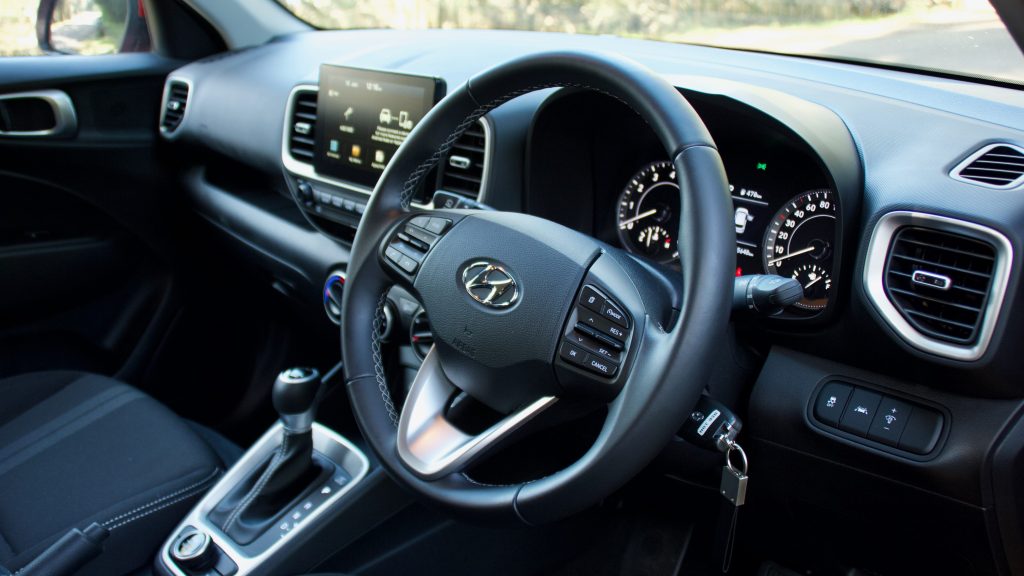
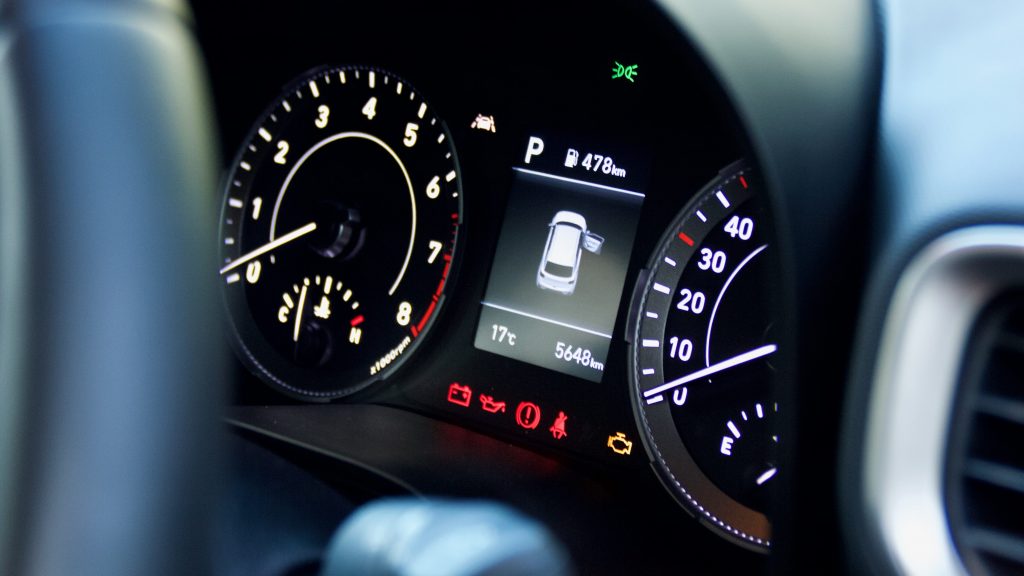
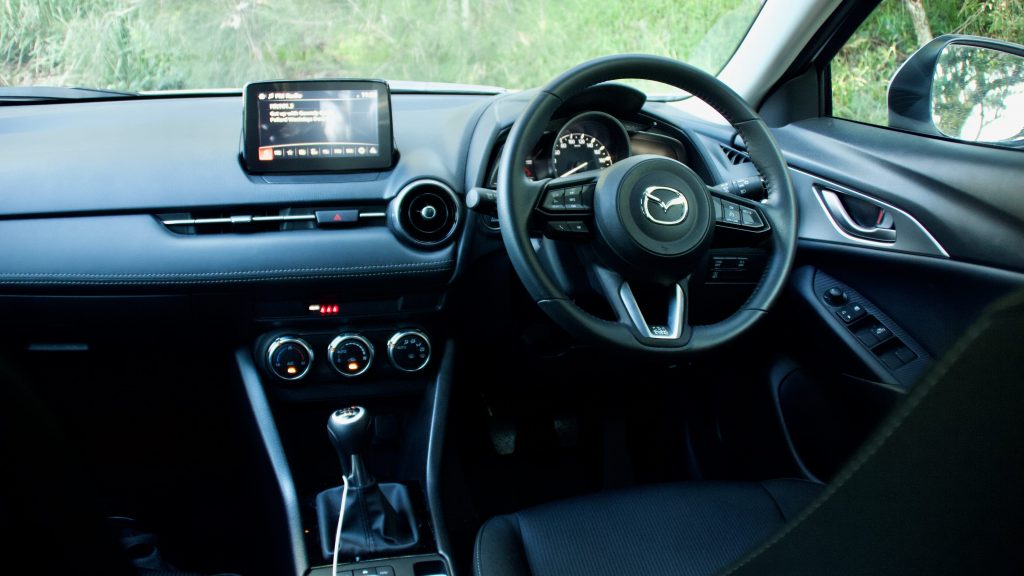
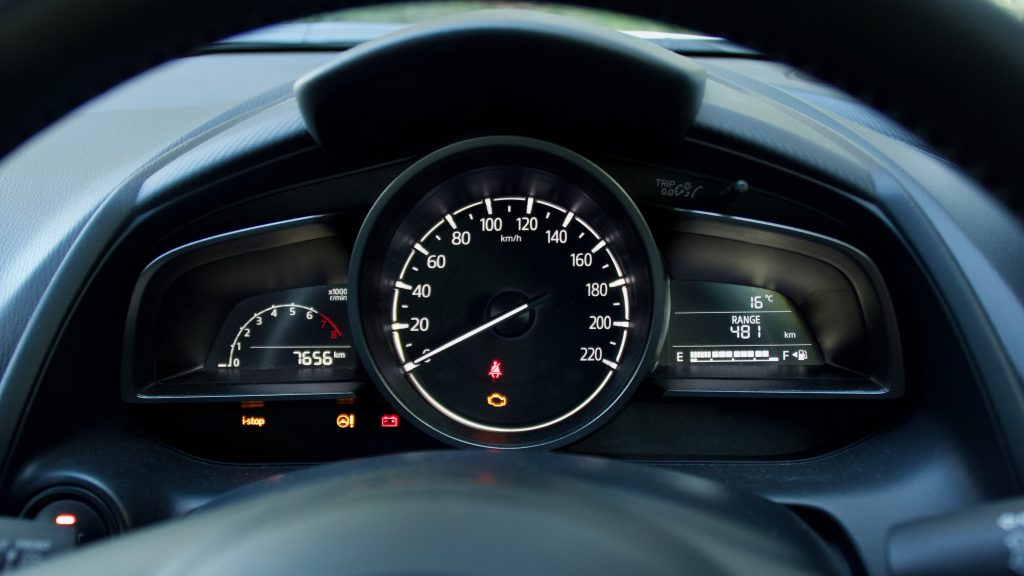
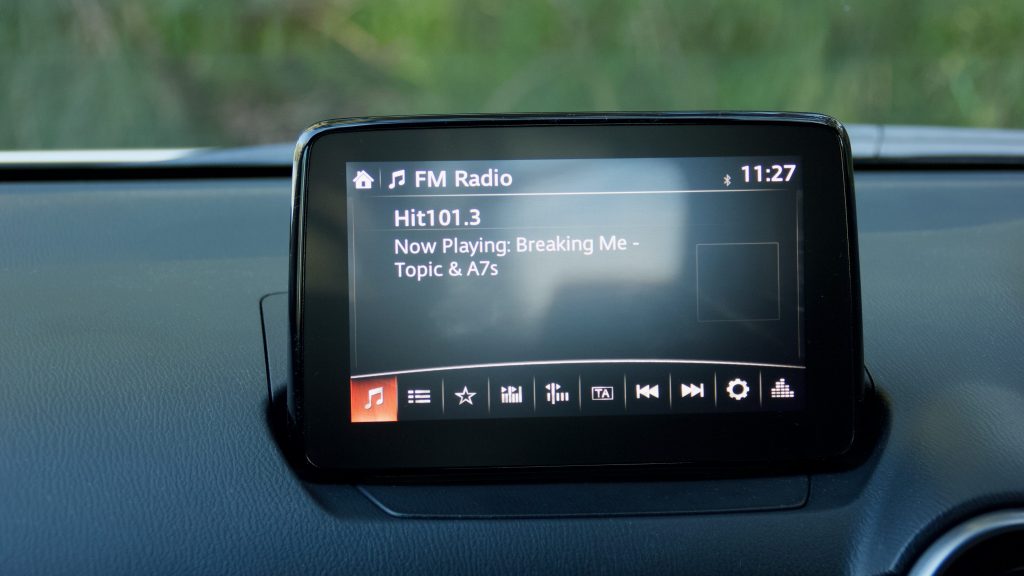
Quality between the two is largely similar – there are expanses of hard plastic covering most of the cabins. The Mazda’s cabin does feel more expensive with higher-quality switchgear and cloth inserts on the doors, though the Hyundai is still well put together. The only sore point to the Venue’s cabin are the door trims, which feature no soft point to rest elbows and are made from cheap materials – plus, the door bins are quite small, which is annoying. But importantly, both feel built to last and will no doubt survive the worst of what your kids can throw at them.
Both cars feature a central touchscreen – the Hyundai’s is slightly larger at 8.0-inches than the Mazda’s 7.0-inch unit, but both are relatively easy to reach and use. The 2020 Hyundai Venue includes Apple CarPlay and Android Auto smartphone mirroring tech on all models, yet the CX-3 does not – it’s available as a $500 dealer fit accessory for the time being. In contrast, the CX-3 has both digital radio and inbuilt satellite navigation – you must move up to the Venue Elite for those.
Like the front cabin, the Venue’s rear seat is more practical than the CX-3 – the doors open wider to aid inserting car seats and leg- and especially headroom are more commodious. The windows are also larger, which is great for kids and keeping car sickness at bay. The Mazda does have a rear centre arm rest with cup holders though, which adds some comfort. Neither have rear air vents, though no competitor currently does – the Indian-spec venue does, however.
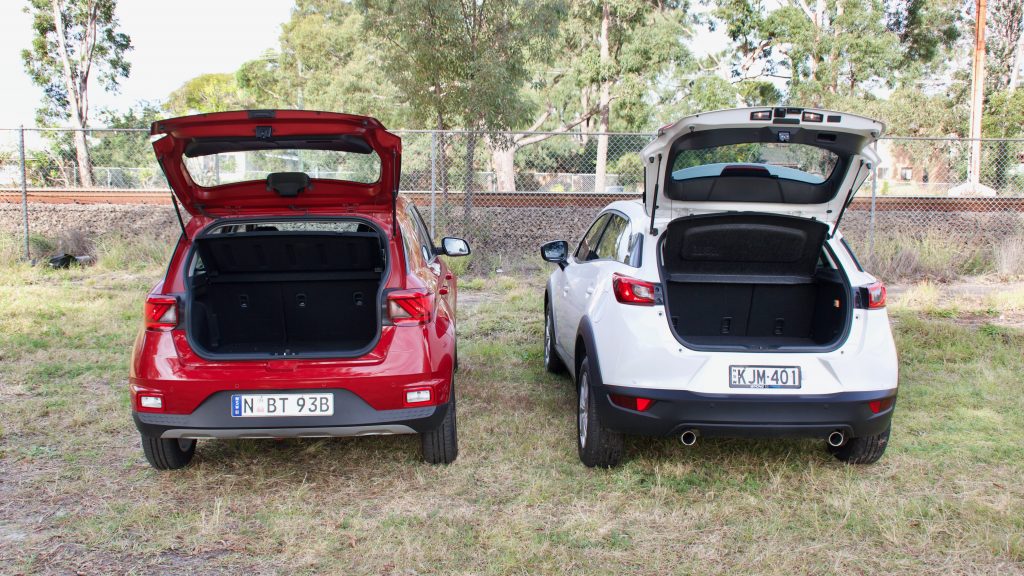
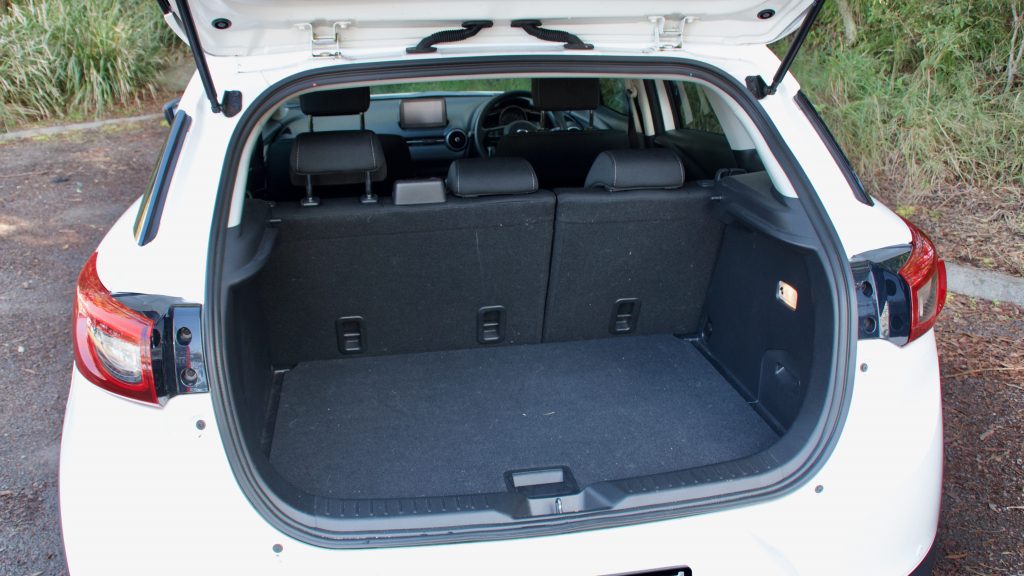
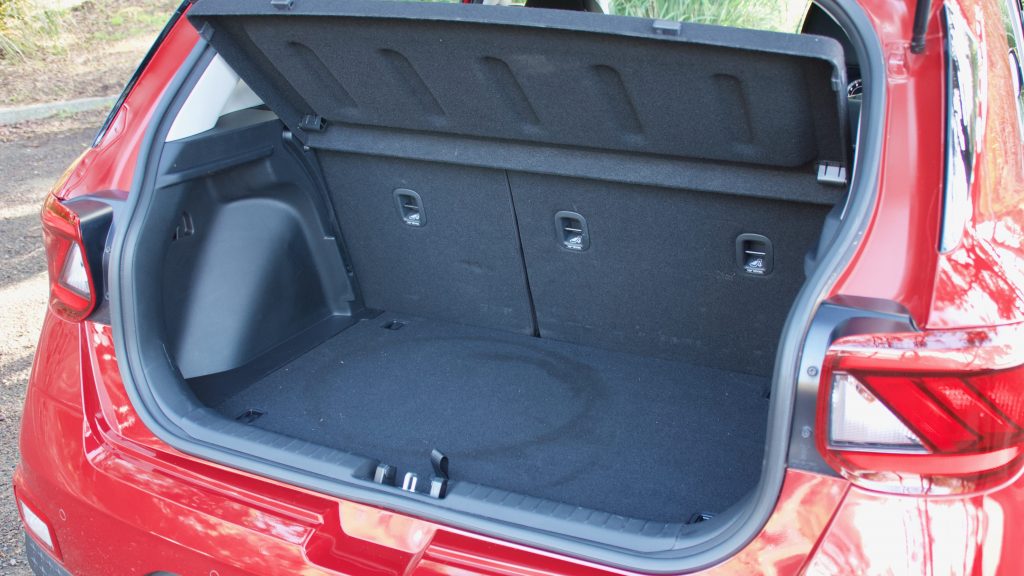
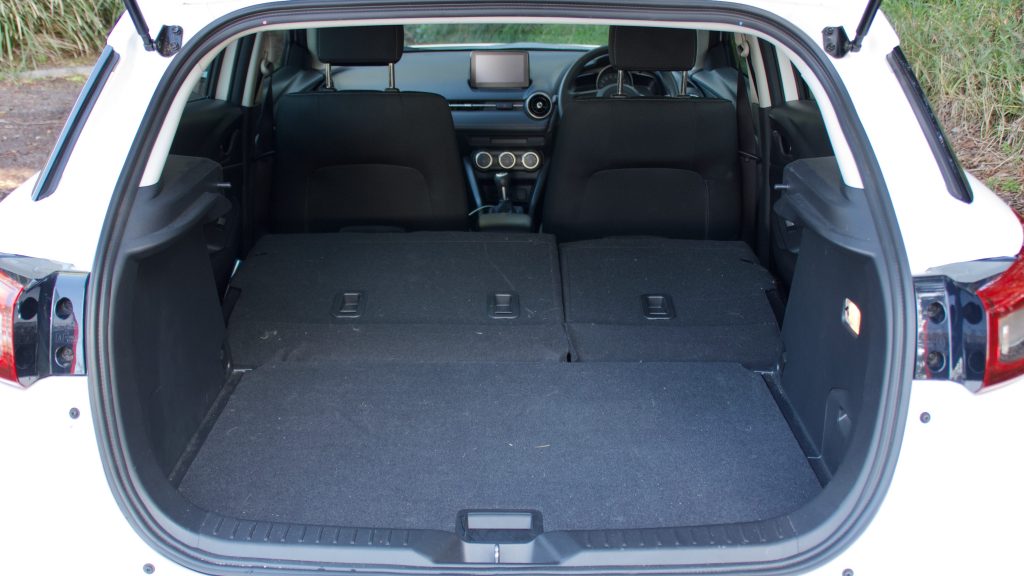
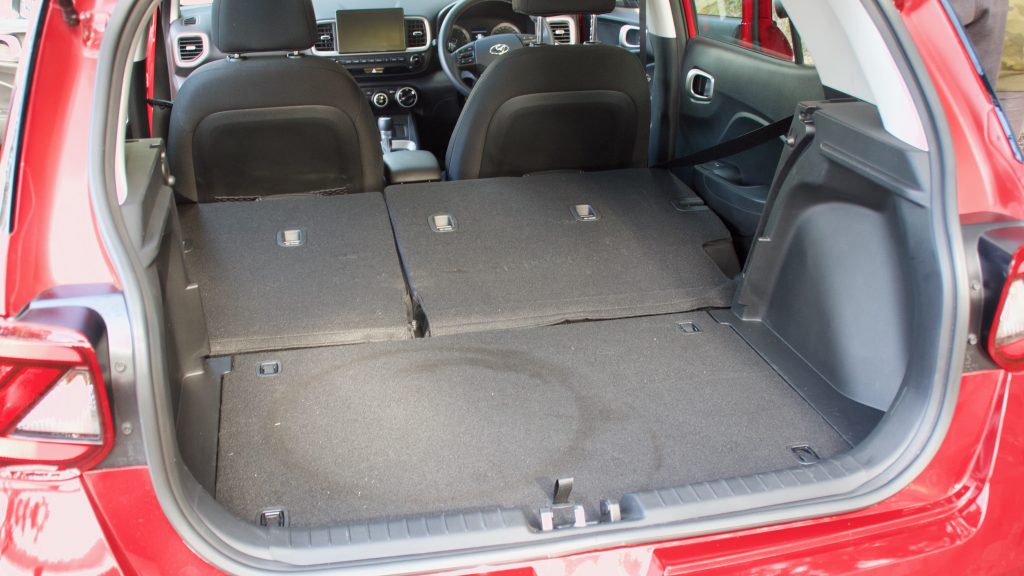
At 355-litres, the Venue’s boot is 91-litres larger than the CX-3’s with the seats up and its false floor reveals a much deeper lower floor. Unlike the Mazda, the Hyundai’s parcel shelf can be stored behind the rear seat thanks to clever grooves in the seat, and the Venue also has a hook to hang bags off. It’s these little touches are something Mazda could improve on in all of its models.
Warranty & Running Costs
Both the Hyundai and Mazda come with five-year/unlimited km warranties with five years of roadside assistance. For three years of servicing, the Venue will cost $857 (or $285 per service) and the CX-3 $1,121 ($374 per service) – and that’s only for 30,000km for the Mazda, thanks to its shorter intervals, whereas drivers in the Venue can cover up to 45,000km over the same time period. Keeping the Mazda serviced until 40,000km (or four services) costs $1,679, which equals $420 per service.
Conclusion
While the Mazda CX-3’s run at the top of the small SUV class was long and successful, we think that – until the new generation model comes along – there is a new class champ: the Hyundai Venue. Not only is it better value than the CX-3, but it’s more practical, cheaper to maintain, more mature feeling and simply feels like a bigger car.
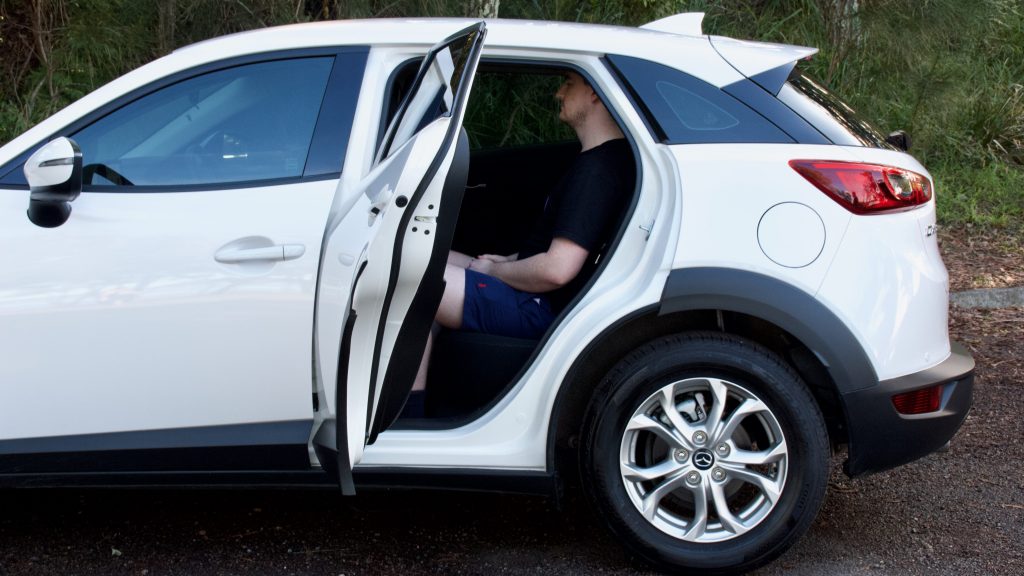
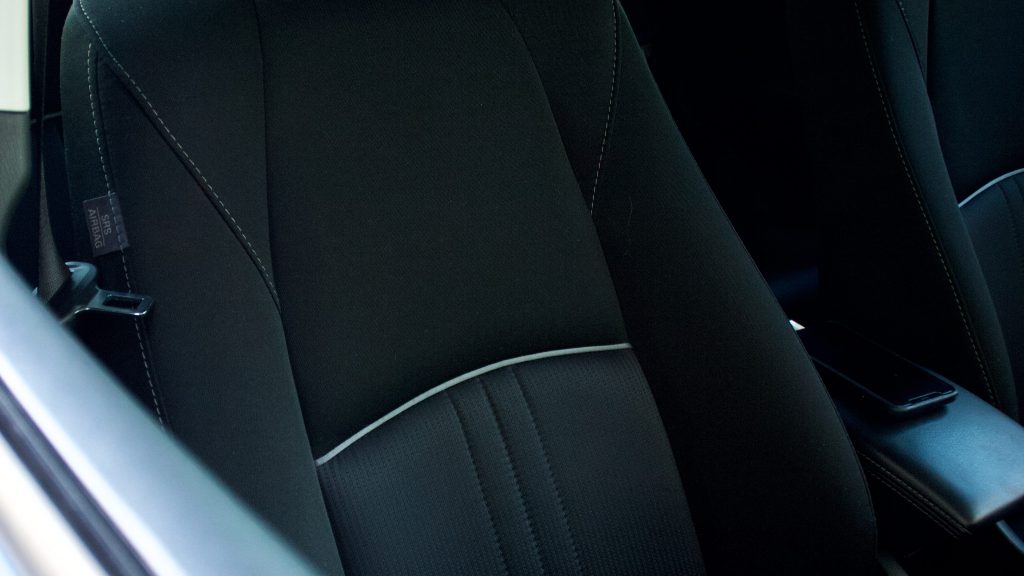
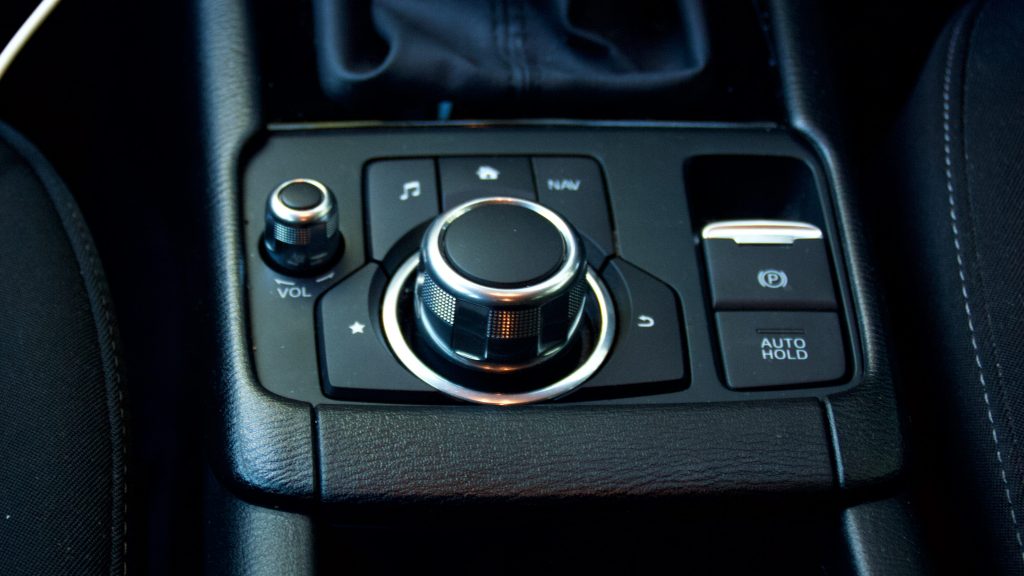
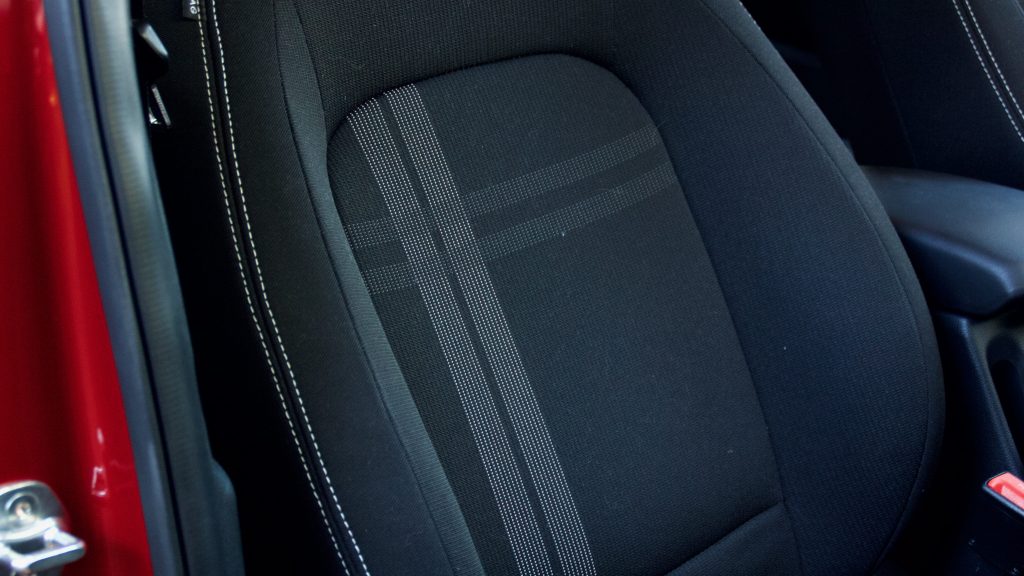
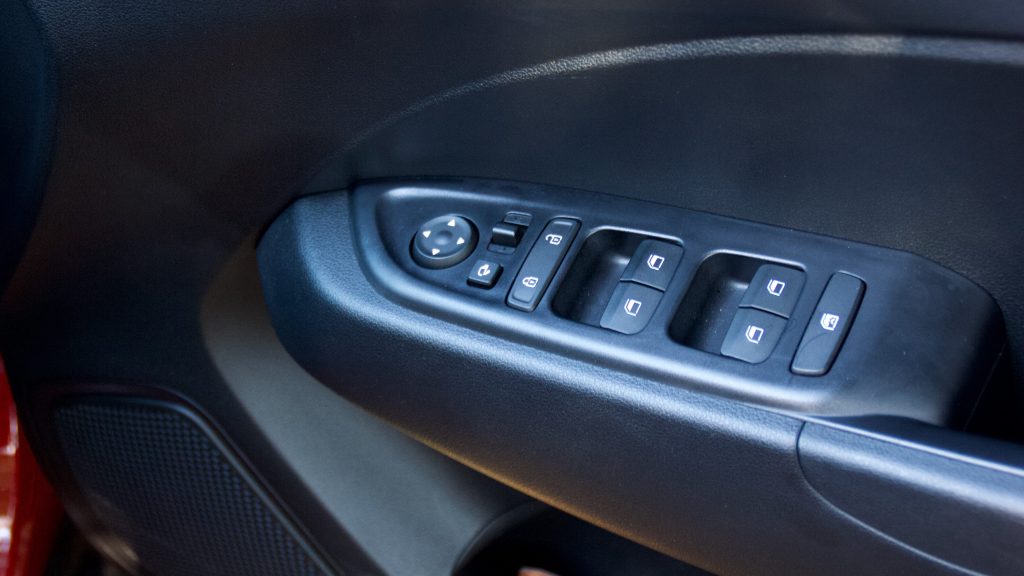
The CX-3 is still a great vehicle, and the high quality of Mazda’s core engineering is shown in that a car can still be successful and appealing after more than five years on sale. Of course, the Venue is not perfect – its engine is thirsty and all things considered, it should be cheaper, but it edges ahead of the Mazda in areas that will likely appeal to its target market most, and that’s why it’s our new small SUV champion.
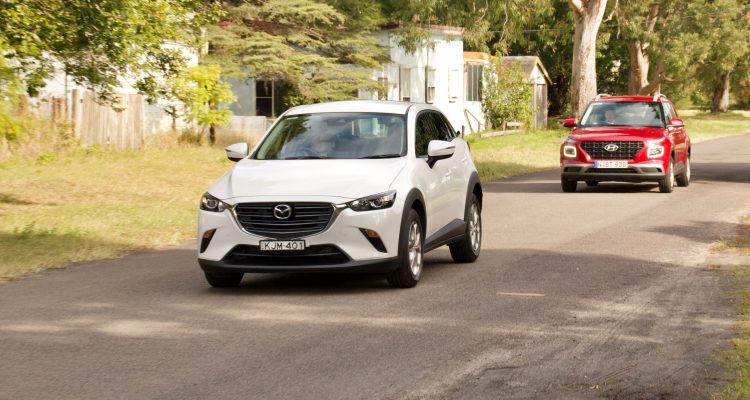
Leave a Reply